Losing faith in electoral processes

No elections in a democratic world are perfect, be it in a liberal or an emerging democracy. In liberal democratic countries, where elections are routine, systemic flaws in elections are termed as 'margin of error' which occur due to unacknowledged ignorance. However, such errors were no more taken lightly after the US presidential election of 2000 where electoral dispute, due to unacknowledged 'margin of error', could not be resolved in the absence of rule for electoral dispute resolution. And results were decided in the court. That event changed the edifice of the electoral system in liberal democracies. But that is not true in most emerging democracies like Bangladesh where systemic flaws coupled with electoral manipulation damage the electoral culture in most cases under partisan governments and, perceived to be partisan, the Election Commission. In emerging democracies, by and large, systemic flaws are hardly addressed. Bangladesh is no exception to that.
The history of Bangladesh is a history of sustained struggle to establish democracy for economic emancipation and social justice. The country's liberation was based on the cardinal issue of democracy and rule of majority through a free fair and credible election. The founding father, Bangabandhu, fought his entire life to establish democracy and peoples' right to vote. Democracy cannot be established without a free fair and credible election on a regular basis. Unfortunately, in the first two decades, Bangladeshi voters did not experience credible elections until 1991 when democracy was restored through acceptable elections under a caretaker government, except the short-lived 1996 February parliamentary election. The situation changed with the 15th amendment that abolished the caretaker system. The electoral administration saw the beginning of the slide in the electoral culture with the flawed, non-inclusive election of January 5, 2014 under a partisan government. It was the beginning of a downturn in the country's electoral culture that continued with subsequent elections including that of the three city corporation elections marred by violence, booth capture, false votes and other irregularities. These elections, in comparison to previous parliamentary and local elections, could not pass to be fair, free and credible even by minimum acceptable standards set by many Afro-Asian emerging democracies. The recent 234 municipal elections too, could not pass the litmus test of being different from the trend set by previous elections, though many certified them to be better than the last city corporation elections. But is that so? The facts do not support such contentions. From published media reports, it seems that this election too, was marred with violence, well-planned systematic manipulation and other forms of electoral corruption.
However, if one were to assess the municipal elections of 2015, one would need to look at the voting pattern, percentage of vote and compare them with the municipal elections of 2011, though the recent municipal elections marked the first time that the party symbol was used for the mayoral post only, breaking away from past practice of non-partisan system.
Last month's municipal elections did not meet the expected standards. The Election Commission missed a chance to enhance its deteriorating image in the January 5, 2014 national assembly election, 4th Upazilla elections and city corporation elections held in 2015. One expected better performance from the Election Commission, the ruling party as well as from BNP. Instead, elections were marred by violence in many places which forced the Election Commission to suspend 20 polling centres and one municipality poll, whereas, to my estimate, at least 25-30 municipality polls should have been scrapped due to corruption, violence and uncontrolled manipulation. The analysis of the results would support the observations.
The statistics just made available to the media shows that the mayoral poll percentage is 73.98 percent; it implies that a large number of municipalities went to poll and more than 74 percent voters turned out for continuous voting, well beyond the stipulated poll time, but that was reportedly not the case. Newspaper reports show that a total of 137 of the declared result of 207 municipalities had polled over 75 percent. The stats reveal that five of the municipalities had polled over 90 percent, and in a few places the tally is 100 percent. These figures seem unfeasible and indicate misconduct with the ballot. Experience shows that three separate ballot voting, with familiar and less familiar candidate symbols, requires a minimum of three minutes per voter. Senior citizens and women voters take one or a couple of minutes more to complete the voting cycle. But we are yet to know whether or not the percentage of votes for councillors have shown similar figures. The contrary would pose questions on the integrity of the poll.
In analysing the aforementioned facts, one does not need to be a genius to calculate the standard number of votes cast in a given polling booth which is designed to handle around 400 voters. In this regard, considering the minimum amount of time, only 20 voters could cast vote per hour. Within the given duration of voting, from 8 in the morning to 4 in the evening, a maximum of 160 voters per booth, more or less, could cast vote which in aggregate could exceed slightly over 50 percent. There is hardly any evidence that polling extended beyond the stipulated time in many centres. One may note that in the 2011 elections, where 254 municipalities went to poll in five phases, the voting percentage was 56.88 percent. The fact remains that our voting and counting system is not digitised; it is still manual which results in more time being consumed. It is easier to scrutinise the state for voting corruption simply by tallying the ballot account sheet, including other relevant documents, whenever one digs into any election result.
Nevertheless, past experience, media reports and comparative analysis all point to the fact that the recent municipal elections were far from free, fair and credible. An election is termed free, fair and acceptable only when the voters can vote freely and their votes are counted and translated into their choices. How credible and acceptable these municipal elections were can only be certified by the voters. However, the fact remains that it would need Herculean efforts to stop the electoral system from the systematic downward slide that has been seen since January 2014.
The writer is Former Election Commissioner and columnist.

 For all latest news, follow The Daily Star's Google News channel.
For all latest news, follow The Daily Star's Google News channel. 

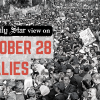
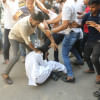
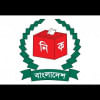
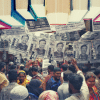
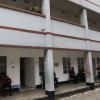


Comments